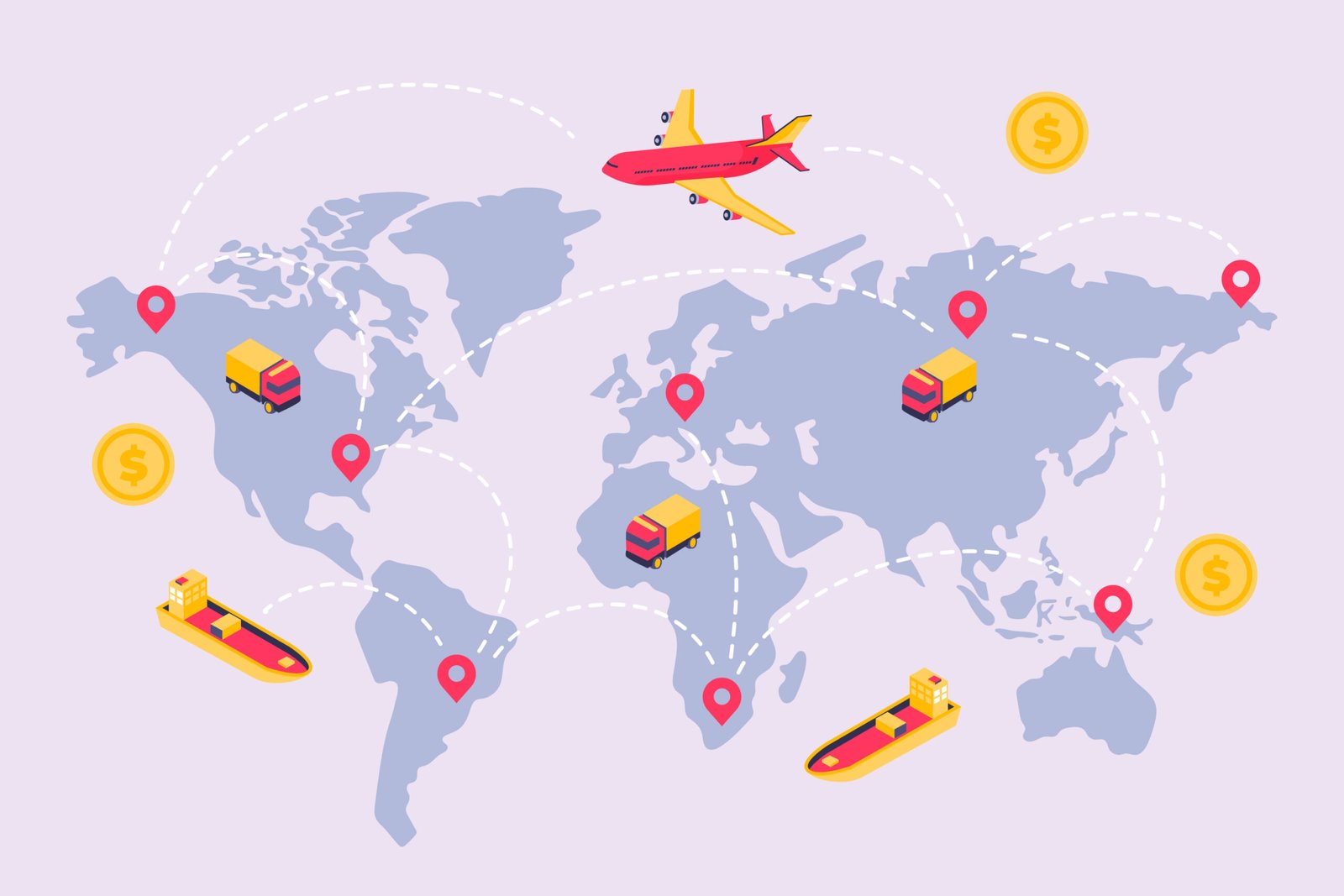Globalization has had a profound impact on various aspects of business, including logistics and distribution networks. As companies expand their reach beyond domestic borders to tap into new markets and resources, the dynamics of logistics and distribution have evolved significantly. In this blog post, we’ll explore the transformative effects of globalization on logistics and distribution networks, examining key trends, challenges, and opportunities in the global marketplace.
Introduction to Globalization and Logistics
Globalization refers to the interconnectedness of economies and cultures worldwide, facilitated by advancements in technology, communication, and trade liberalization. It has led to the expansion of international trade, the emergence of global supply chains, and the integration of diverse markets.
Logistics, on the other hand, encompasses the planning, execution, and management of the flow of goods and services from point of origin to point of consumption. In the context of globalization, logistics plays a crucial role in facilitating cross-border trade, ensuring the efficient movement of goods across vast distances and diverse geographies.
Trends Shaping Global Logistics and Distribution Networks
- Expansion of Global Supply Chains: Globalization has fueled the expansion of supply chains across continents, with companies sourcing raw materials, components, and finished products from multiple countries. This has led to the development of complex and interconnected networks of suppliers, manufacturers, distributors, and retailers.
- Adoption of Just-in-Time Inventory Management: With the rise of globalization, companies have increasingly adopted just-in-time (JIT) inventory management practices to minimize inventory holding costs and respond swiftly to changing market demands. JIT relies on efficient logistics and distribution networks to ensure timely delivery of goods and components.
- Utilization of Multi-modal Transportation: Global logistics networks rely on a mix of transportation modes, including air, sea, road, and rail, to move goods efficiently across long distances and diverse terrains. Multi-modal transportation offers flexibility, reliability, and cost-effectiveness in navigating the complexities of global trade.
- Integration of Technology: Technology plays a critical role in optimizing global logistics operations, enabling real-time tracking, visibility, and data analytics. Innovations such as GPS tracking, RFID tagging, and blockchain have enhanced supply chain transparency, traceability, and efficiency.
Challenges in Global Logistics and Distribution
- Complex Regulatory Environment: Global logistics operations are subject to a complex web of regulations, tariffs, customs procedures, and trade agreements across different countries and regions. Navigating this regulatory landscape requires careful compliance and coordination.
- Infrastructure Limitations: Inadequate infrastructure, particularly in developing countries, can pose challenges to global logistics networks, leading to delays, congestion, and increased transportation costs. Improvements in infrastructure, such as port facilities and transportation networks, are essential to support the smooth flow of goods.
- Supply Chain Disruptions: Global logistics networks are vulnerable to various disruptions, including natural disasters, geopolitical tensions, and pandemics. Such disruptions can disrupt supply chains, lead to inventory shortages, and impact business continuity.
- Cybersecurity Risks: As logistics operations become increasingly digitized and interconnected, cybersecurity threats pose a significant risk to global supply chains. Cyberattacks targeting transportation systems, inventory management systems, and communication networks can disrupt operations and compromise sensitive data.
Opportunities for Innovation and Growth
- Optimization of Last-Mile Delivery: With the rise of e-commerce and online retailing, there is a growing focus on optimizing last-mile delivery logistics to enhance customer satisfaction and reduce costs. Innovations such as drone delivery, autonomous vehicles, and smart routing algorithms are transforming the last-mile delivery landscape.
- Sustainable Logistics Practices: Globalization has heightened awareness of environmental sustainability and the need for greener logistics solutions. Companies are increasingly adopting sustainable practices such as energy-efficient transportation, eco-friendly packaging, and carbon-neutral supply chains to reduce their environmental footprint and meet consumer demands.
- Data-driven Decision Making: The abundance of data generated across global logistics networks presents opportunities for data-driven decision-making and predictive analytics. By harnessing big data and advanced analytics, companies can optimize route planning, inventory management, and demand forecasting to improve operational efficiency and customer service.
- Collaborative Supply Chain Partnerships: Collaboration and partnership are becoming increasingly important in the global logistics landscape. Companies are forming strategic alliances with suppliers, carriers, and logistics service providers to create agile, responsive, and resilient supply chains that can adapt to changing market conditions and mitigate risks.
Conclusion
Globalization has transformed the logistics and distribution landscape, reshaping the way companies source, produce, and distribute goods worldwide. While globalization has presented challenges such as regulatory complexity and supply chain disruptions, it has also created opportunities for innovation, growth, and collaboration. By embracing technological advancements, sustainable practices, and strategic partnerships, companies can navigate the complexities of global logistics and distribution networks and thrive in the interconnected global marketplace.
Discover how Divyaraj Logistics leverages its expertise and global network to provide seamless logistics solutions tailored to your business needs. Contact us today to learn more.





